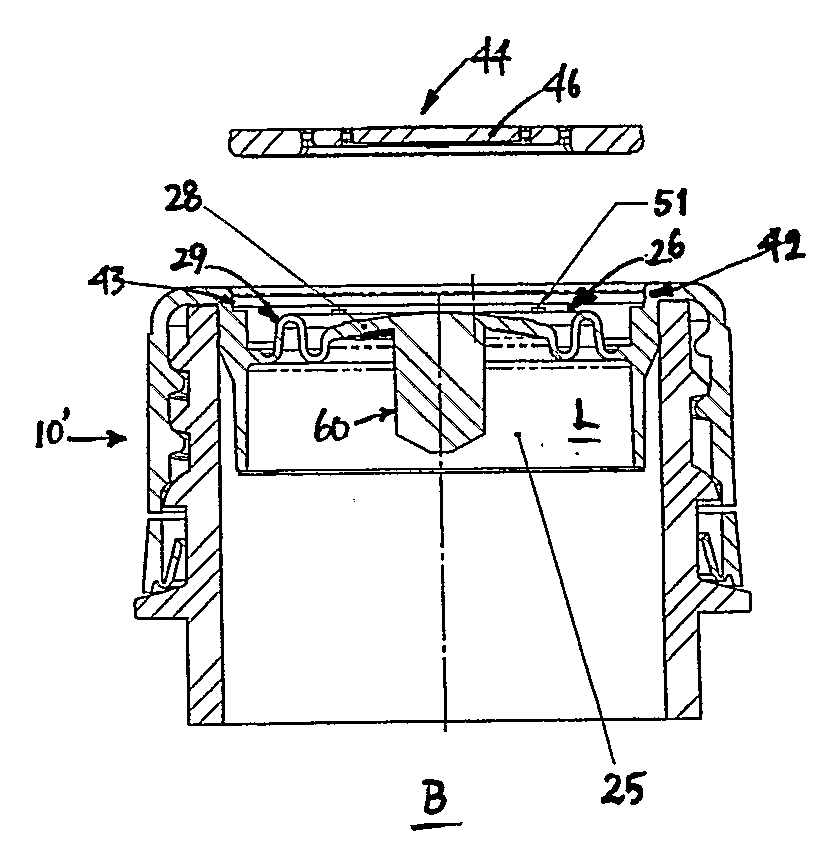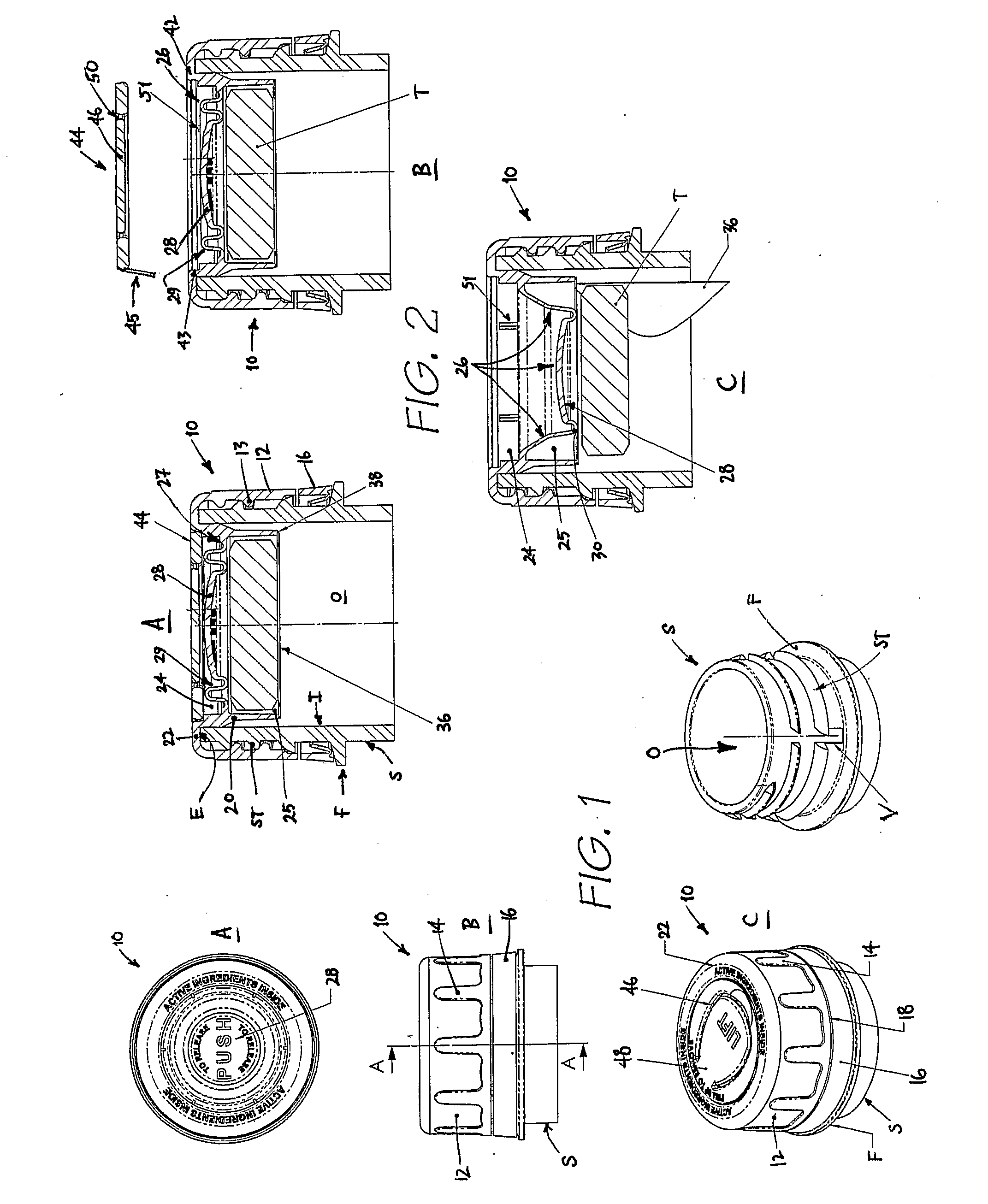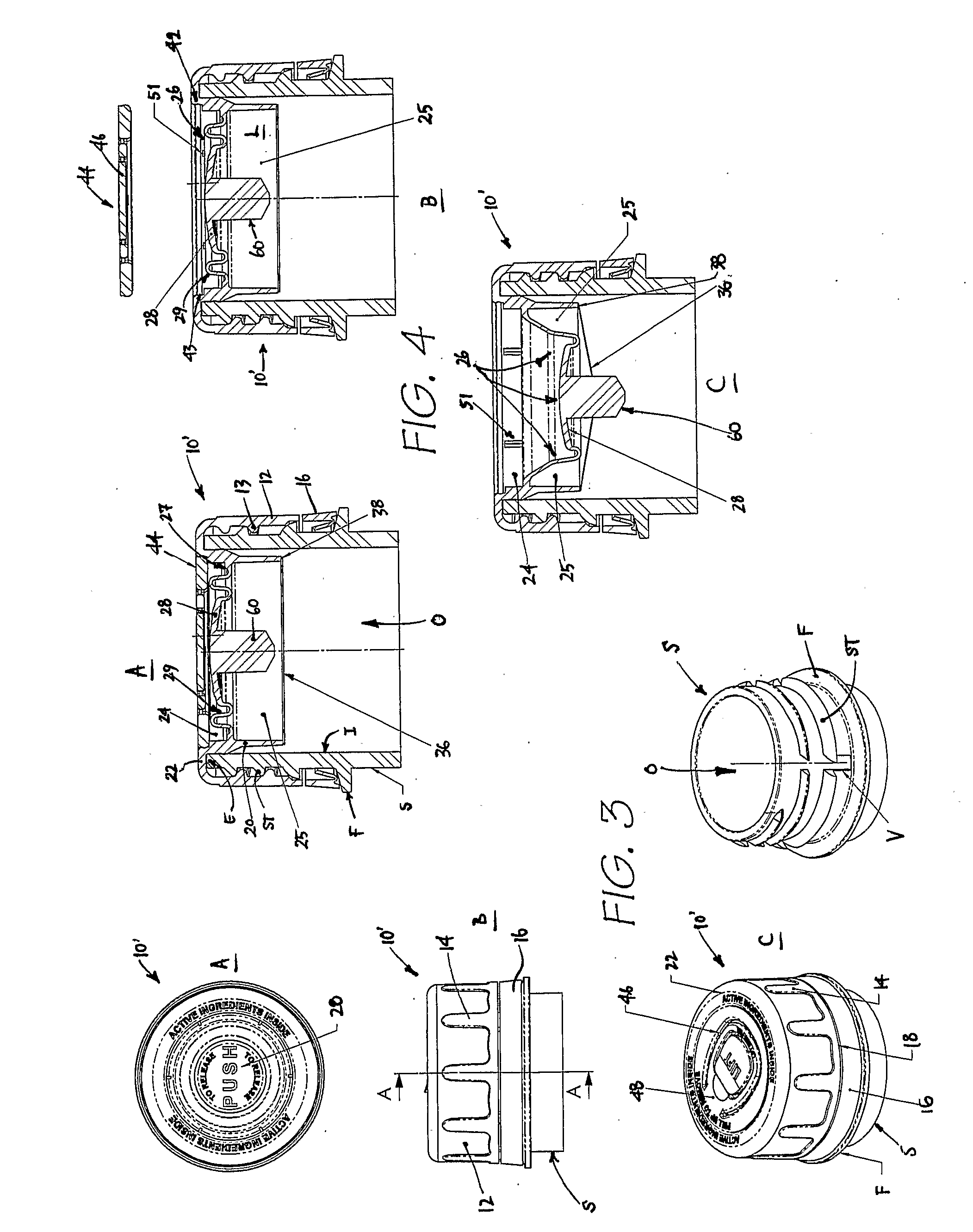Closure
a container and closure technology, applied in the field of container closure, can solve the problems of complex manufacturing and thus relatively expensive, a more complex and therefore costly means, and achieve the effect of facilitating membrane detachment and constant width
- Summary
- Abstract
- Description
- Claims
- Application Information
AI Technical Summary
Benefits of technology
Problems solved by technology
Method used
Image
Examples
Embodiment Construction
[0046]Referring firstly to the embodiment of FIGS. 1 and 2, a closure in the form of a cap 10 is shown. The cap 10 is adapted for releasable mounting to a container having an opening surrounded by a rim, which in FIGS. 1 and 2 is a bottle spout S having external threads ST defined above a peripheral flange F. Vents V in the threads ST are provided for build-up gas release during closure removal.
[0047]The cap 10 comprises an external peripheral wall 12 that is internally threaded at 13 to surround and threadably engage the spout external threads ST when the cap is mounted to the bottle (FIG. 2). The wall 12 is provided with a plurality of ribs 14 therearound to facilitate gripping during cap screwing / unscrewing to / from the bottle.
[0048]A tamper evident band 16 is frangibly connected via bridges 18 to a distal end of the external wall 12. The band can either be configured to remain attached to the bottle spout S when the cap is removed from the bottle, or it can define a tear strip th...
PUM
 Login to View More
Login to View More Abstract
Description
Claims
Application Information
 Login to View More
Login to View More - R&D
- Intellectual Property
- Life Sciences
- Materials
- Tech Scout
- Unparalleled Data Quality
- Higher Quality Content
- 60% Fewer Hallucinations
Browse by: Latest US Patents, China's latest patents, Technical Efficacy Thesaurus, Application Domain, Technology Topic, Popular Technical Reports.
© 2025 PatSnap. All rights reserved.Legal|Privacy policy|Modern Slavery Act Transparency Statement|Sitemap|About US| Contact US: help@patsnap.com



